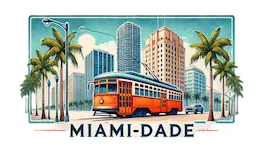|
Getting your Trinity Audio player ready... |
Tabla de Contenido/ Table of Contents
- 1 Watson Island: A Public Park in Exchange for Luxury Development?
- 2 Commissioner Pardo’s Defense of the Project
- 3 Criticism and Concerns
- 4 Key Resolutions: Watson Island Projects
- 5 The Closure of Jungle Island and Its Transformation
- 6 Affordable Housing Over $3,000?
- 7 The Public Park and Cost-Benefit Analysis
- 8 Watson Harbour: Luxury with Limited Public Benefits
- 9 Critical Questions
- 10 Conclusion
Watson Island: A Public Park in Exchange for Luxury Development?
The future of Watson Island, one of Miami’s most iconic areas, is being reimagined through two recently approved development projects. While these initiatives promise to revitalize the island with public spaces, housing, and new attractions, questions arise about who truly benefits and whether these projects align with the priorities of Miami-Dade residents.
The development proposal for Watson Island, championed by Miami City Commissioner Damian Pardo, has sparked intense debate among residents and neighboring communities. The plan includes the construction of luxurious residences, hotels, and commercial spaces while returning 13.3 acres for a waterfront public park. However, the key question remains: Is this a fair trade-off for Miami’s residents?
Commissioner Pardo’s Defense of the Project
Commissioner Pardo has openly defended the initiative, calling it a unique opportunity to transform Watson Island into an iconic space that integrates world-class development with significant public benefits. According to Pardo, the new state-of-the-art park will not only serve as a recreational area but also an educational space designed for the community.
“We’re reclaiming land that has been inaccessible to most residents and turning it into an invaluable public asset,” said Pardo. He also emphasized that the development team will invest $37 million to build the park and contribute $2 million annually for its maintenance.
Criticism and Concerns
Despite these promises, the project has faced criticism. Detractors argue that the primary focus appears to be on private developers’ profits, such as constructing luxury condominiums unaffordable for the average Miami resident. Meanwhile, the public benefit seems limited to a park that, although valuable, doesn’t balance the impact of private development.
The Cuban exile community, a prominent voice in Miami, has also expressed concerns about the use of public land in such an emblematic area, questioning whether the project truly represents the interests of the broader community.
Backed by Commissioner Damian Pardo, the proposal is moving toward a final vote to determine whether this development marks a new chapter for Watson Island or becomes another example of imbalance between private growth and public needs.
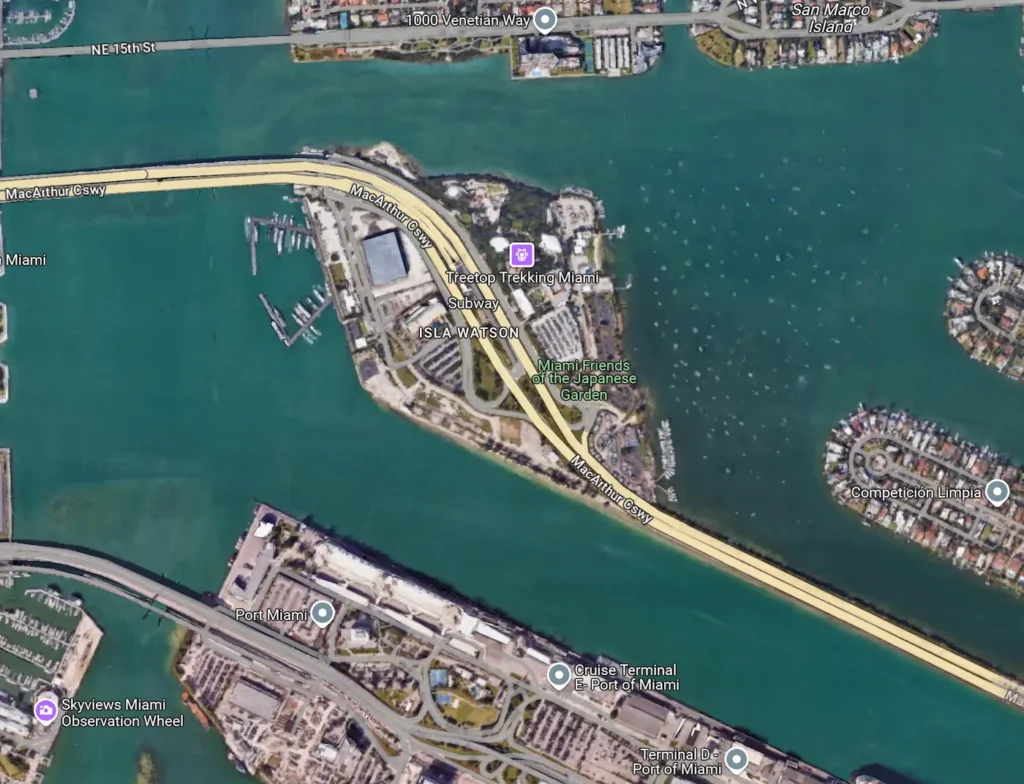
Key Resolutions: Watson Island Projects
Resolution R-24-0281
This resolution authorizes modifications for development on the property at 888 MacArthur Causeway, managed by BH3 IG Developer LLC.
Key Highlights:
- Lease Extensions: Leases are extended to 99 years.
- Sale of 3.2 Acres: Land for a luxury hotel and residences will be sold for $25 million.
- Land Use Changes:
- Condominiums will replace timeshare units.
- Offices are added as a permitted use.
- Community Commitments:
- $9 million for affordable housing and infrastructure.
- Creation of a public waterfront promenade along Biscayne Bay.
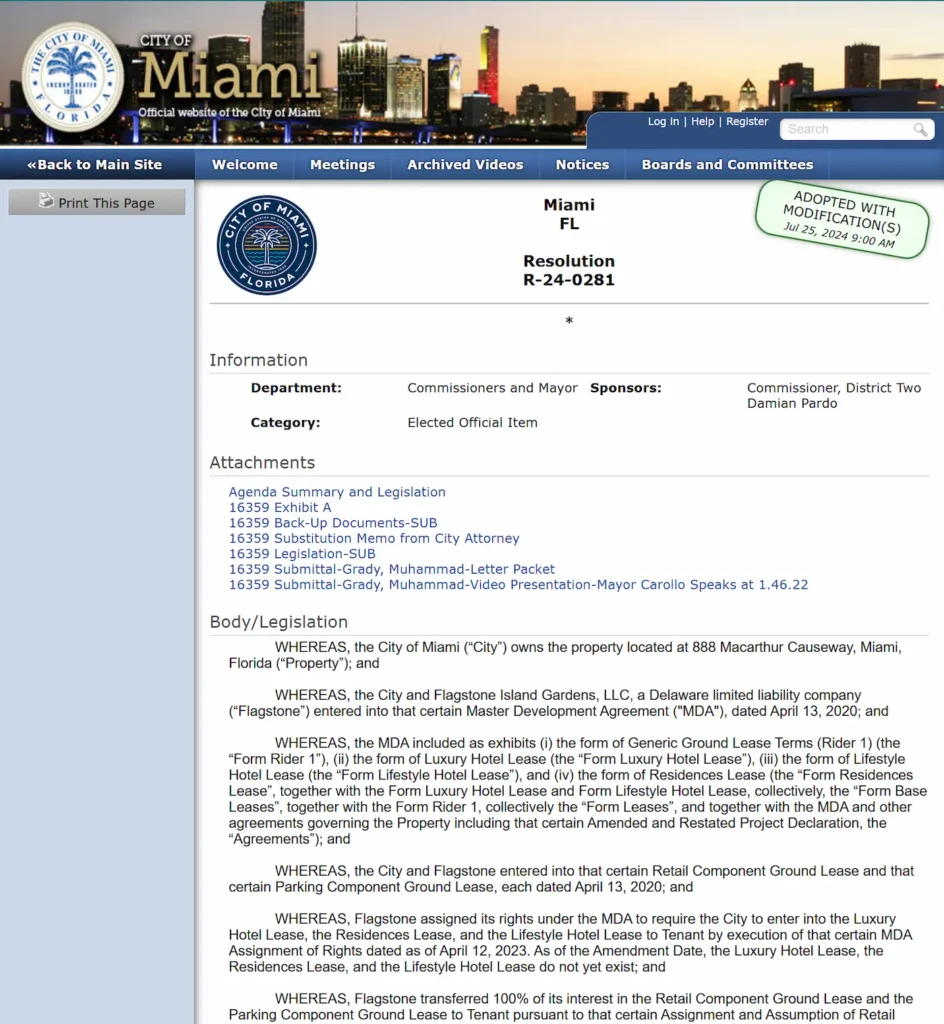
Resolution R-24-0282
This resolution outlines the use of 5.4 acres at 1111 Parrot Jungle Trail, setting guidelines for development by Ecoresiliency Miami LLC.
Key Highlights:
- Land Sale: 5.4 acres will be sold for $135 million for residential and commercial use.
- Contract Cancellations: Includes termination of the Jungle Island lease.
- Return of 13.3 Acres: Allocated for a waterfront public park.
- Community Contributions:
- $15 million for affordable housing and infrastructure.
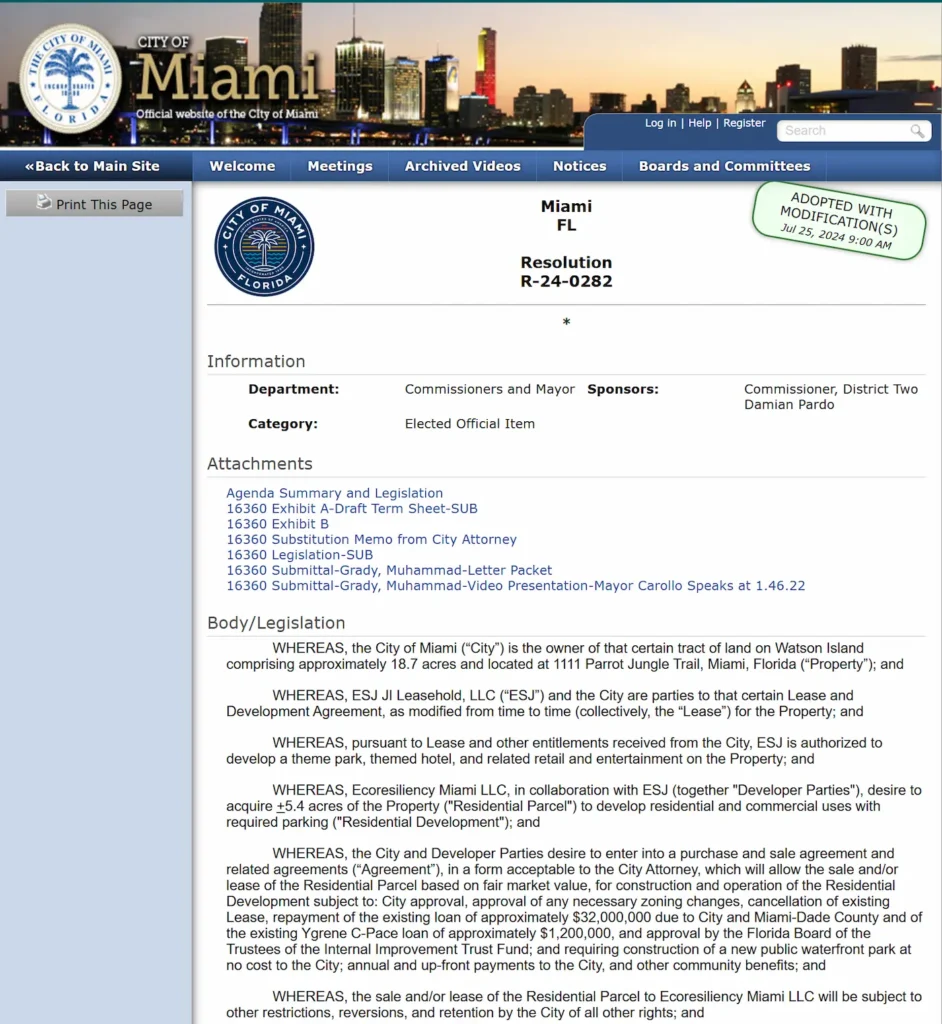
The Closure of Jungle Island and Its Transformation
The project entails the permanent closure of Jungle Island, a historic attraction that began in 1936 as Parrot Jungle in Pinecrest and relocated to Watson Island in 2003.
In its place:
- Luxury condominiums will be constructed, and a portion of the land will be converted into a public park.
Criticism and Challenges:
- Unaffordable Condominiums: Local activists like Grady Muhammad point out that the planned condos will be out of reach for the average Miami resident.
- Commitment to Public Benefits: Skepticism remains about whether developers will fulfill promises of public investments in parks and affordable housing.

Affordable Housing Over $3,000?
The term “affordable housing” has sparked controversy. If so-called affordable units exceed $3,000 in monthly rent, are they genuinely accessible to low- and middle-income residents? This type of “affordability” raises doubts about who truly benefits from these initiatives.
The Public Park and Cost-Benefit Analysis
One of the most touted aspects of the projects is the creation of a 15.4-acre public park, with developers committing $37 million for its construction and $2 million annually for maintenance.
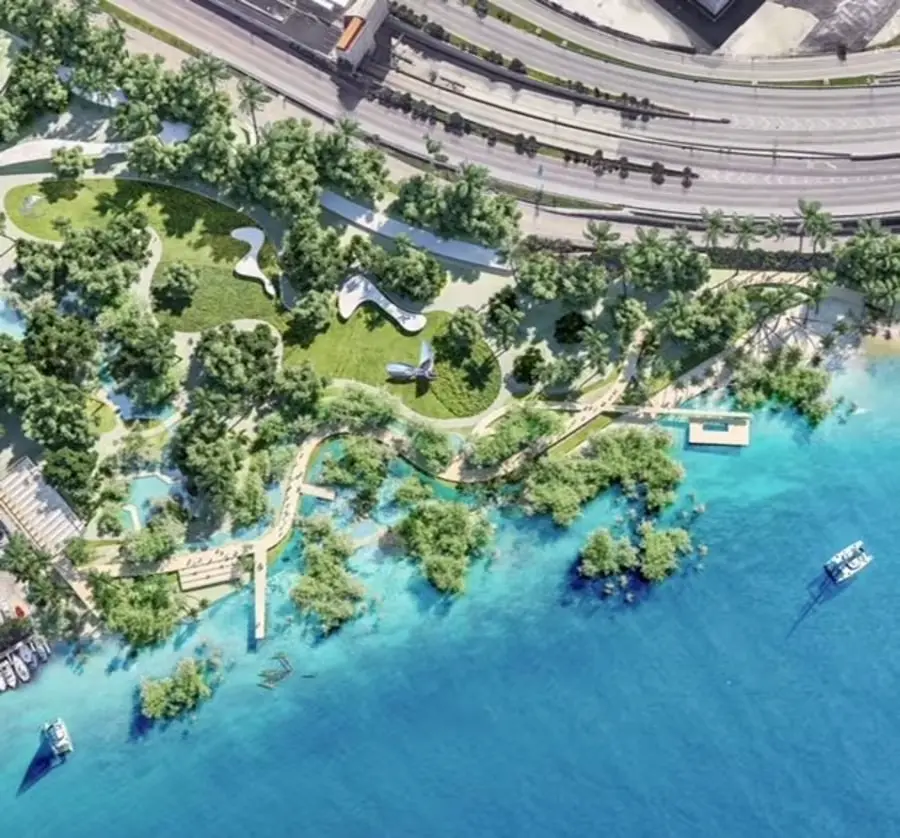
Key Questions:
- Is a park sufficient to offset the privatization of land in such an exclusive area?
- Will equitable access to the park be guaranteed for all residents?
- What impact will these developments have on Miami’s cost of living and social dynamics?
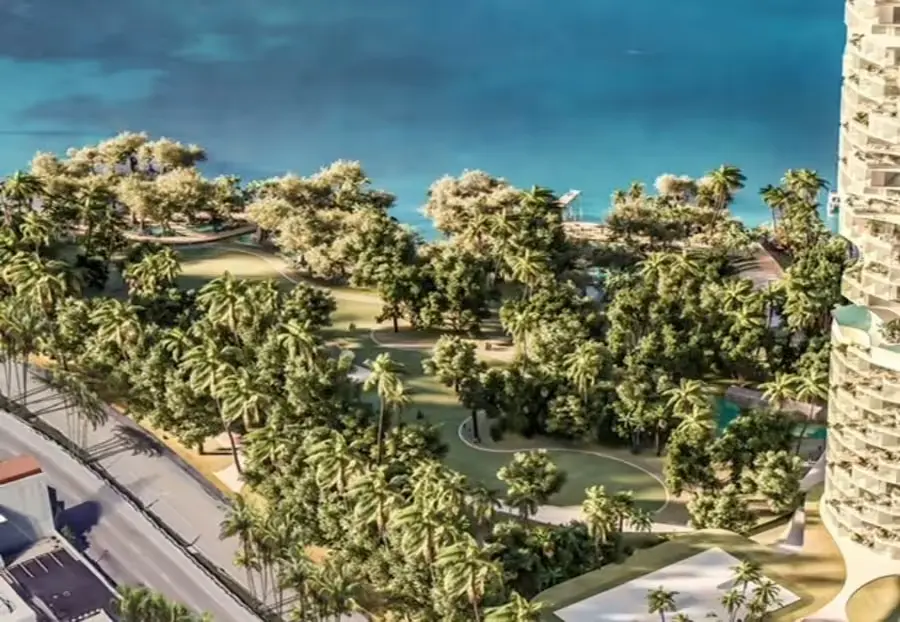
Watson Harbour: Luxury with Limited Public Benefits
On the island’s south side, the Watson Harbour development includes:
- A 2.2-acre public promenade: Connecting commercial and residential areas.
- Hotels and Offices: Alongside luxury residences and waterfront dining options.
- Resilience Improvements: Including flood-resistant seawalls, native flora, and advanced stormwater management systems.
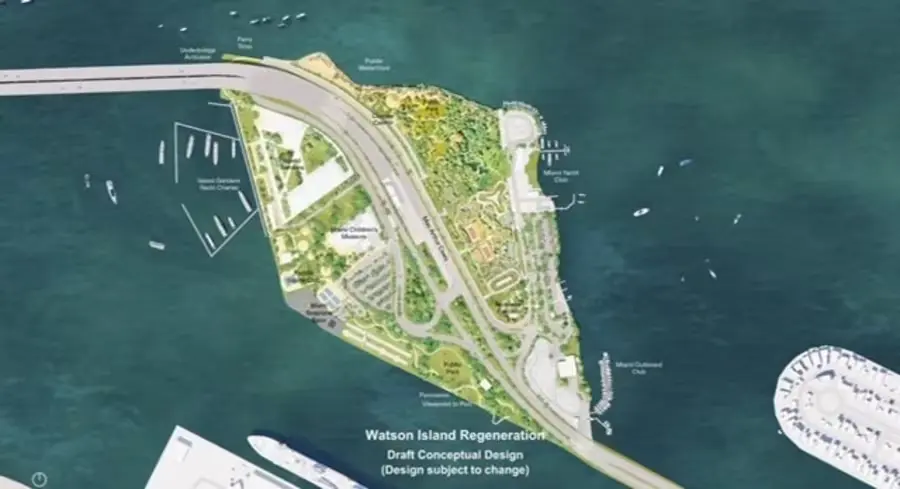
Although the project won’t use public funds, its benefits largely favor private interests, with limited returns for the local community.
Critical Questions
- Transparency and Public Participation
- How were these decisions made?
- Were the benefits and commitments clearly communicated to the public before the referendum?
- Use of Public Land
- Is it fair to trade public land for private luxury developments that most residents can’t access?
- Affordable Housing or Hidden Luxury?
- How do developers justify calling units affordable when rents exceed $3,000 per month?
- Impact on the Community
- Do these developments truly provide sustainable benefits for Miami residents, or do they contribute to gentrification?
Conclusion
The Watson Island projects present significant opportunities but leave many unanswered questions. While public spaces and contributions to affordable housing are promised, luxury developments dominate the narrative. Miami’s community deserves transparency, fulfilled promises, and a vision prioritizing its needs over private interests.
Is this a fair trade-off, or are we giving away public land in one of the county’s most exclusive areas for projects that primarily benefit a privileged few?
Want more post like this?
Head over to our homepage for the latest updates from South Florida and beyond:

